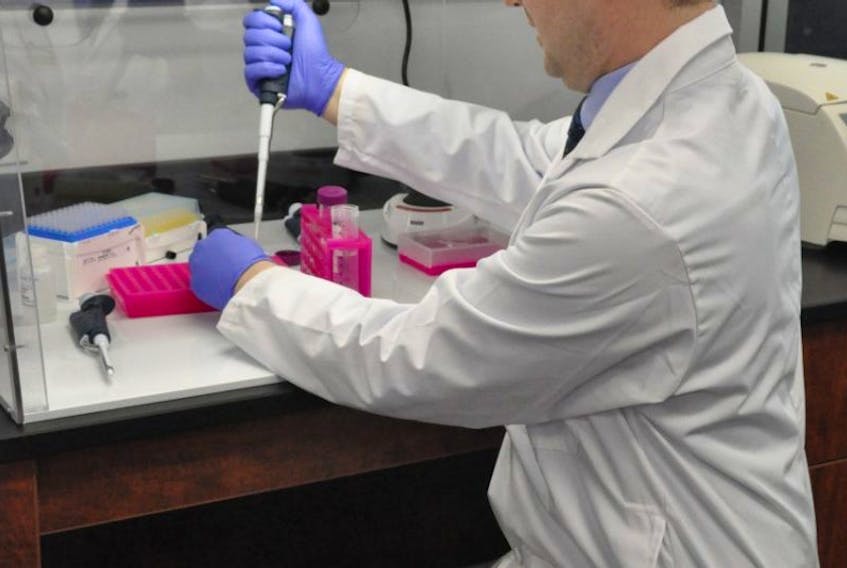The Centre for Environmental Genomics Applications (CEGA), operated by eDNAtec Inc., will research how the technology used in genomics — the study of genes and their functions — can be deployed to assist in environmental assessments and monitoring and be an invaluable tool in identifying and characterizing organisms in a given environment.
“Basically, we generate the information about the changes in environment through probing the genes that are coming from different species,” explains Dr. Mehrdad Hajibabaei, CEGA’s chief scientific adviser.
“In other words, rather than counting the species directly or observing them, we use genetic information.”
The concept is that technology available today allows researchers to read the DNA floating in a small sample of seawater and determine what organisms are represented, from whales all the way down to microscopic bacteria.
That information will then be passed along to stakeholders, agencies and, particularly in this province, companies operating in the oil and gas sector.
“We know there is potential, we’re going to do aggressive applied research with a lot of data analysis and we’re going to put in a framework of what (the) oil and gas (industry) and stakeholders want to see,” says Hajibabaei.
He says the technology won’t replace, but rather complement, the data that is acquired in traditional scientific and environment engineering methods of obtaining data for assessments and monitoring.

“What we have determined, and others as well, is that there is an information gap,” explains Hajibabaei. “A lot of the sites are hard to access, remote sites in offshore or Arctic regions, so the sampling part of this technology is going to be much more robust compared to sending big crews.”
Mark Ploughman, acting CEO for the province’s Research and Development Corp., says CEGA addresses a need identified by the industry to help it gain a better understanding of its working environments.
“By way of comparison, the new eDNA methodologies being developed in this facility can be equated to looking into space through the Hubble telescope when previously all you had was a pair of binoculars,” says Ploughman.
The bulk of funding for CEGA comes from the Hibernia Management and Development Co., to the tune of $4.4 million. The federal government, through the Atlantic Canada Opportunities Agency’s innovation fund, is in for $3 million, with the RDC providing $750,000.
Petroleum Research Newfoundland and Labrador, while not a financial partner, has been assisting in facilitating those funds over the last two or three years.
CEO David Finn says they’re confident it will draw more activity to this province.
“We’re hopeful there will be a lot more investment on a go forward basis, not just in the oil and gas industry, because this technology’s got an opportunity to really revolutionize environmental impact assessment and monitoring in any kind of resource development, terrestrial or in the ocean.”
Hajibabaei says they expect to employ 10 to 15 people at the centre at peak operation.
Twitter: kennoliver79









